After suffering a stroke in his right eye in 2012, Elk Grove resident Doug Winter, a trained commercial photographer, began to think differently about sight and perception. Then, when complications from a lens replacement surgery caused his father to also lose his sight a few years later, Winter’s work took on new meaning. Documenting the progression of his father’s condition, Winter recorded conversations with his father about what he could see, and the unexpected memories that surfaced would later provide inspiration for his art.
Winter’s father also experienced blindness, and it was the
conversations with his father about what he could see would
provide inspiration for his photographic project “Enter Light.”
The title of this image is “Benevolent Kiss Day 234.”

“Enter Light” is the project that resulted, following the death of Winter’s father in 2019. Capturing the essence of the memories and perceptions his father had shared with him, Winter created blurred images with a camera he’d disassembled and permanently altered. He modified light and color with in-camera manipulations such as the use of filters placed directly on the sensor.
“He would talk about these experiences he had as a kid, a lot of stuff that he never shared with me. He talked about a woman that he loved and lost, that he really was upset that he didn’t pursue and marry. And they both really loved each other, and they were young, and she moved away, and he didn’t fight to go after her,” Winter said.
“So I recorded some of those conversations, not knowing I was going to do this project. I had no idea I was going to make a photographic project on the conversations I had with him on his eyesight, but I recorded him. And that’s how they came about.”
In these otherworldly images, recognizable yet distorted subjects emerge: a pair of blurry hands on a blood-red background, a profile of a nude woman’s body in soft, blue light, or a shadowy portrait of the artist himself. Others are more abstract — just color, light and shadow; an apt portrayal of life without sight and a departure from the highly representational photography Winter previously made.
A Denver native, Winter graduated with a photography degree from the Colorado Institute of Art, where he also worked in the institute’s photography lab after graduating. Winter’s career included photographing presidents and diplomats in Washington D.C. and commercial and editorial work for brands, record labels, newspapers and magazines.
After moving to Sacramento in 1995, he continued to pursue photography while also working in IT until a rare blood infection caused the stroke in his right eye that led to partial blindness. While he could still see and take photographs, looking through the viewfinder with his intact left eye, the experience changed the way Winter approached photography.
“It was more like a change in the way I saw the world and the way that both physically and emotionally and metaphorically, everything shifted in a really good way,” Winter said.
Winter completed a two-year photographic project documenting Sacramento’s unhoused population at Loaves and Fishes’ Friendship Park and published a book of this work, while building a production company in Los Angeles, until the COVID-19 pandemic put an indefinite pause on all of his projects.
Still processing the loss of his father, and with newfound time on his hands, Winter began to work on a new, deeply personal project centered around “an inner narrative of my experiences with my father and my own vision.”
In 2023, Winter was awarded a National Endowment for the Arts grant for this work, which culminated in an exhibit, “Echoes of Perception: Essays on Vision,” at Cosumnes River College of his photography along with accessibility aids including audio and closed captions. These were accessible through QR codes that would allow viewers to read or hear descriptions of the art and view the image directly on their cell phone. The exhibit included translation into Spanish and Vietnamese as well as English.
After suffering a stroke in his right eye in 2012, Winter, a
trained commercial photographer, began to think differently about
sight and perception.The title of this image is “Full of Grace.”

Do you see your work around sight as a form of advocacy?
Yeah, I do. I think I do in the sense, like, look, I wear glasses. … I’m not legally blind. We have good days and bad days like everybody, based on my past health experience. But I really believe the world is just so narrow in the way that it accepts people into it. So I just wish that there was something that I could wear, even if it was a pair of glasses that would automatically understand what I needed and translate for me.
And I’m just trying to do something on a level that’s much smaller than that. I’m trying to educate. I just want people to get their eyes checked when it’s time, when you’re 40 or even before then; if you have a problem, get your eyes checked. Also, wear eye protection no matter what you’re doing — if you’re outside mowing the lawn. I know people used to laugh at me — this is before my eye accident and I had a problem with my eye — but I always wear eye protection, and it’s so important because you don’t know when an accident’s going to happen. That’s why it’s called an accident. My friend Dennis, who lost his life because he didn’t get an eye exam earlier; it could have saved his life.
And just accessibility. Even people who have dyslexia or process words differently than we all do. Those QR codes that I put next to those titles, it’s a way for people to get close and understand and show that it’s advocacy, which is, you want to talk to people and advocate, but it’s also compassion and caring for somebody who’s not like you, who doesn’t see like you and doesn’t hear like you, who approaches the world differently than you do.
And it’s like a handshake. It’s like a welcome — when there’s accessibility, when people feel welcome, when you use their first name, when you try to give them an outreached hand, people appreciate that. And it is also through language. So my exhibition was presented in Spanish, Vietnamese and English because at the college where it was shown, those were the three most spoken languages.
Winter’s photograph “Eyes Closed Day 89” recreates the visual
experience of light entering through closed eyelids.

If someone is blind and experiencing your work, how do they experience it?
Well, 90 percent of people who are legally blind can see something. It’s not black. So I felt it was important to put these accessibility features in. … The image on the wall, if you scan the QR code, that image will pop up on your phone, an audio of what the image is, what it’s about. Its size will pop up, a voice will tell you, and there will be an image description of what you are experiencing on your phone. And it’s closed captions and audio. So if you’re deaf, you can read or somebody can translate for you.
I noticed in your bio, you described your work as “spirited rebellion against the pursuit of digital perfection.” Can you elaborate on that and what inspired you to challenge traditional photographic approaches?
I’ve always had a chip on my shoulder for the rules of photography. … I’ve always disliked the perfectionism of my training. I was trained as a commercial photographer, and everything had to be tack sharp and focused. Although all that education was excellent, and it was very good for me because I had a solid foundation in which to obliterate those rules and make it professional and make it look good and make sense as a photographer … but to obliterate the rules. I don’t think it matters what camera you use, and I don’t think it matters to your lens or equipment, and I’ve always felt that way.
I poke a hole in a piece of tinfoil and make a lens. And so when I decided to do the project, I took a lens apart and put it back together incorrectly on purpose and said, ‘OK, now what?’
I guess to sum it all up, what I wanted to do and what I am doing currently is this: I was tired of my camera being a copy machine, and I wanted to use my camera as a conceptual mechanism to communicate the thoughts and feelings of this inner narrative that I had inside me based on my experiences with visual impairment and blindness of my late father.
Winter was awarded a National Endowment for the Arts grant for
this work, which culminated in an exhibit, “Echoes of Perception:
Essays on Vision,” at the Cosumnes River College in October 2023.

And how do you think your experience with your own vision loss has shaped the way that you view photography as a medium?
It’s totally different. I’ve always liked photographers who are not really photographers. I don’t know if that makes sense. I think it’s because of my background and drawing and painting so much when I was a child, but the people that I gravitate towards were really the people that my instructors and other people at the art institute really couldn’t stand.
I can throw out some names that really influenced me. The Starn Twins had a gigantic influence on me. Nan Golden. And Nan Golden really helped me to see, at an early age, the magic of photography. Things didn’t have to be sharp, things didn’t have to be perfect. You could really capture a moment in time and just take the sliver of that and communicate an experience to somebody. I saw the Ballad of Sexual Dependency at the SFMOMA and it just changed me. Francesca Woodman, Carrie May Weems, all these female photographers — women, specifically women artists and female photographers — are far more of a bigger influence on me than any other demographic.
Why do you think that is?
I think, I know this is — I mean, you can print this, make it bold. I believe that women are better artists than men.
Oh boy.
I do. I believe that they’re better artists. I believe they’re better photographers. I believe they’re better storytellers. I know that when I say that to people, they ask me, why do you think that is? Why would you say that? And I’ve looked at a lot of work, and I’ve had a big life experience. I’ve experienced a lot of stuff that most people will never experience, and the photographers who are men that I like, they create work like women. … They all have these sensibilities of, I guess what it is, is the male gaze is removed from these people who make that art, the male way of looking at life. … I think what it is — this is just going to sound, I don’t know how it’s going to sound, but I think that women and people who identify as women see the world differently than cis men do. They just do. You can look at the work, the work speaks to it. It just does.
Winter’s image, “Veiled Sight Day 75,” explores his own
experience with partial blindness by the placement of colored
filters over the camera’s sensor.

Interesting. So, photography as a medium has not been accepted as fine art universally. How do you think your work goes beyond the technical aspect of the medium and really becomes art?
I want to say, I think it has to do with intent and how honest I am as an artist to put something forward that I know people aren’t going to look at and just pass by. And that I don’t care if you don’t like it, that’s fine. Even though my work is photographic, I only make three prints of each size that I offer. Some of those are one of one, they’re original. Some of them are touched in a way that they can’t be duplicated, that they’re original objects, and those are more proof of concept works, which I think are more precious and rare to me than the large works that sell. The little works, the tiny four by six inches, that I have an idea and I make this little object that inspires me to do a large work.
I wanted to talk a little bit about the analog nature of what you do. You talked about how you modify your camera lens. I have a couple of questions around that. One is, why not just move the lens ring and make it out of focus? What do you think drove you to want to take the lens apart and permanently alter it versus just shooting a little out of focus?
Yeah, that’s such a personal question, and it’s so interesting because you can’t undo a disability. I couldn’t undo my father’s blindness. I can’t undo my own oddity of vision. It was important to me.
I took the lens apart specifically because of my father’s eyesight. I gave the camera a permanent visual impairment. Like my father, I turned the camera into a visually disabled mechanism.
What was presented to me is like, okay, how do I work with this? Okay, I’ve messed this lens up pretty badly. It’s not ever going to focus unless I take it apart again. But how, okay, I’m handed this, which is like a lot of people, they are given something that then they have to adapt.
There’s adaptation and there’s grieving and there’s trying to figure out how to use something, walk around or see in a way that makes sense to you. And so making it permanently broken seemed like the most honest way to tie a physical disability to a mechanical one to represent what that was all about.
Using an altered camera that blurs and distorts subjects,
Winter’s photos allow viewers to experience their own perception
and the emotions and memories that are connected to it.

With your images, the subject isn’t really the subject, it’s how it makes you feel. So what’s the importance of that, having the viewer be able to have this emotional experience when looking at your art?
I think that it’s very difficult to express, or I wish that I could take what I feel in my chest and share it with people. For me, that would be the ultimate art experience, if I could experience the emotions of another person. And second to that experience would be being able to see through someone else’s eyes. And so I try to combine those two things to allow space for somebody to come to their own conclusion based on the experiences in their lives and really kind of guide them in a way to what I said in the past, guide them into these latent areas of their mind that they didn’t know were there. These possibilities of recollection and experience that might trigger something not bad, hopefully not bad, but that I know that when people connect, they really connect.
I think the biggest thing was that I wanted anybody to be able to meet the work, whether you’re a kid or 85-year-old person, whatever that is, however you approach it, whatever that meeting might be, that was important to me. And I know currently my work is more representational than the past work, but I still just want a democracy to the work.
Edited for length and clarity.
Stay up to date on art and culture in the Capital Region: Follow @comstocksmag on Instagram!
Recommended For You
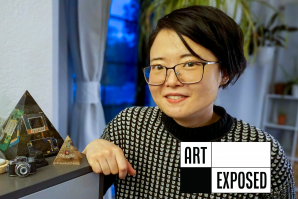
Art Exposed: Muzi Li Rowe
This mixed media artist and photographer explores culture through defunct technology
Whether it’s layers of tiny microchips or rows of dead batteries, each work in Muzi Li Rowe’s Magical Thinking series is like peering into a tiny museum where the most microscopic parts of now-defunct personal technology devices, from old Nokia flip phones to disposable cameras, become individual hallmarks of consumer culture.
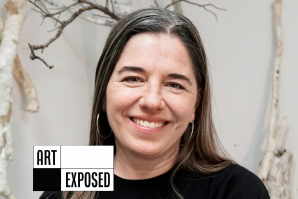
Art Exposed: Jodi Connelly
Meet the artist who uses dirt to explore the connections between people and the environment
Burnout from a 10-year career working in the nonprofit sector in Brooklyn led Jodi Connelly to a creative breakthrough in her art practice.
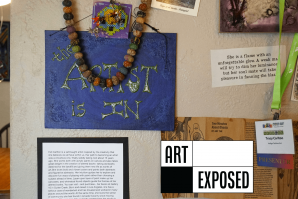
Art Exposed: Tracy ‘Indi’ Carlton
Meet the Amador County artist who traded in a 21-year nonprofit career to become a creative expression coach
Tracy Carlton took an unconventional path to her art career, launching a as a creative expression coach and teacher last year following a 21-year career at First 5 Amador, the Amador County branch of the statewide nonprofit commission dedicated to improving early childhood development.
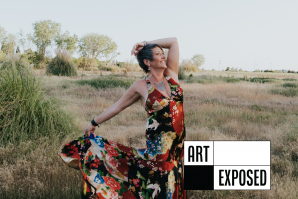
Art Exposed: Carrie Hennessey
The vocalist, instructor and writer emphasizes positive energy and risk-taking, whether onstage or coaching others
Carrie Hennessey has been known to belt out a tune while walking her dogs outside of her South Natomas home, but the neighbors in this otherwise quiet neighborhood don’t seem to mind. She picked up the moniker “Opera Mom” while her two children (now in their 20s) were in elementary school, but there is a lot more to her.
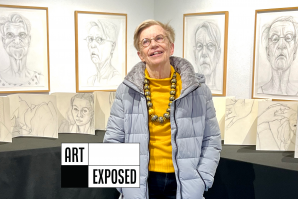
Art Exposed: Betty Nelsen
On the art of how to look in the mirror
In revisiting her early self-portraits, Betty Nelsen has zeroed in on the strongest elements, cropping the drawings into pages that will go into a series of handmade books.
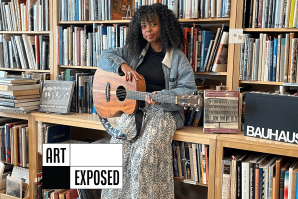
Art Exposed: Beti Masenqo
The musician-singer-songwriter blends folk and rock with the Ethiopian songs of her childhood
When she performs, singer and songwriter Beti Masenqo leaves this earthly plane in a way that seems entirely effortless.
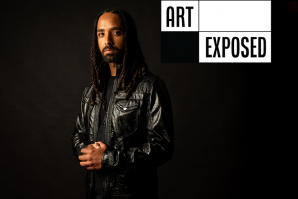
Art Exposed: Unity Lewis
A curator, artist and musician carries the legacy of his grandmother’s groundbreaking work documenting the Black experience
Unity Lewis recently curated a series at Crocker Art Museum that brought his grandmother’s book into the three-dimensional world by pairing works of artists from previous generations with their modern counterparts who will carry the torch.



